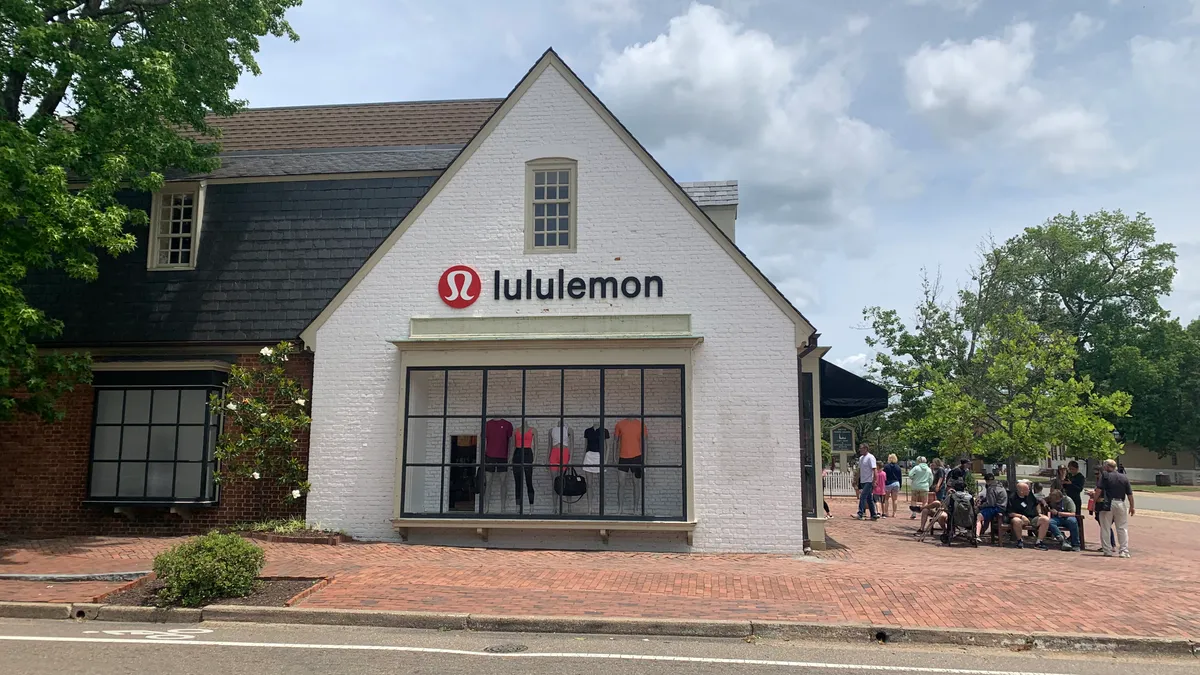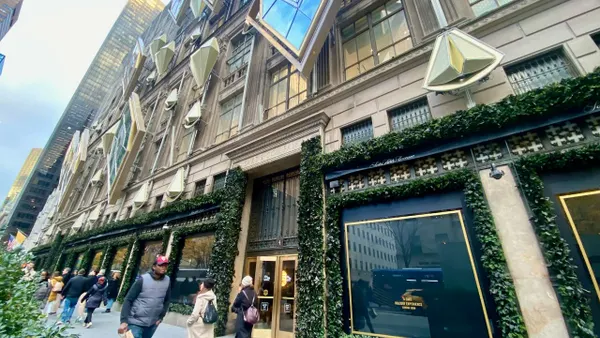Dive Brief:
-
Gap Inc. announced a slate of hires Wednesday that underscores the ambitions in beauty and accessories that CEO Richard Dickson outlined a couple of weeks ago.
-
Effective immediately, former Nordstrom beauty merchant Deb Redmond is Gap Inc. general manager of beauty, reporting to Chief Business and Strategy Officer Eric Chan. John Demsey, a former Estée Lauder executive who helped scale brands like Tom Ford Beauty and MAC Cosmetics, will advise as executive director of beauty.
- Michele Parsons, once a merchant at Kate Spade, Coach, J. Crew and Tommy Hilfiger, is general manager of accessories, reporting to Chan. Award-winning designer Reed Krakoff, who is creative chairman at John Hardy and has worked with Coach and Tiffany & Co., will advise as executive director of accessories.
Dive Insight:
Dickson earlier this month called beauty and accessories “sleeper categories” that represent “two very big opportunities for us.” He has backed that up with some of the biggest names in those industries.
“Gap Inc. is making a bold move into beauty and accessories with the right talent,” said Liza Amlani, co-founder of Retail Strategy Group. “It shows they are serious.”
Nordstrom merchandising veteran Nancy Mair, now president of NCM Consulting, similarly said that the appointment of Redmond means “they really mean business about beauty, because she's a really great beauty merchant.”
“The beauty thing is kind of throwing me off, because — if they hadn't brought her on — I wouldn't understand the vision, where they’re taking it,” she said by phone. “But because she's such a veteran, then I'm really interested. It could go many different ways, but I do believe Deb is a force in fragrance and beauty.”
Redmond spent more than two decades at Nordstrom, where she held various senior leadership roles. Her initiatives included bringing prestige beauty to Nordstrom Rack and she played a key role in the department store's beauty floor evolution in New York.
Amlani questions the move to debut this iteration of Gap Inc.’s beauty business at Old Navy, though. Dickson has said the plan is to launch “brand-right expressions” in the category across all brands, but that the value business will start things off. This fall, Old Navy will have beauty and personal care products in 150 stores, with staffed shop-in-shops in some locations — a test-and-learn phase before scaling the Old Navy beauty business next year.
“Beauty thrives on inspiration, storytelling, and credibility, none of which align with a value-first banner,” Amlani said by email. “If Gap Inc. really wants to win, beauty should start with The Gap brand, where lifestyle and aspiration feel more authentic. The team could lean into the excitement around The Gap right now and continue to pull in more customers with beauty. Otherwise, this could be just another retailer chasing a hot category without the right foundation.”
Accessories are less of a head-scratcher, both analysts say.
“Accessories make so much sense in the head-to-toe shopping of Gap brands,” Mair said. “There's always that aesthetic I believe that Gap should have, in their simple elegance in handbags as well as jewelry — and belts too. So I think it's a really smart move.”
Amlani agrees, though she warned that “execution is everything.”
“Accessories are high-margin, outfit-completing items that naturally extend the apparel experience and encourage customers to shop a full look,” she said. “But too many retailers over-assort accessories, which leads to markdowns and margin erosion. The real opportunity is a tightly curated, innovative assortment of handbags, belts, and jewellery that feel modern and differentiated. Investing in material and product innovation is critical here. Strong design, quality construction, and sustainable materials can turn accessories into a profitable category that elevates the entire Gap portfolio, rather than just cluttering the sales floor.”















